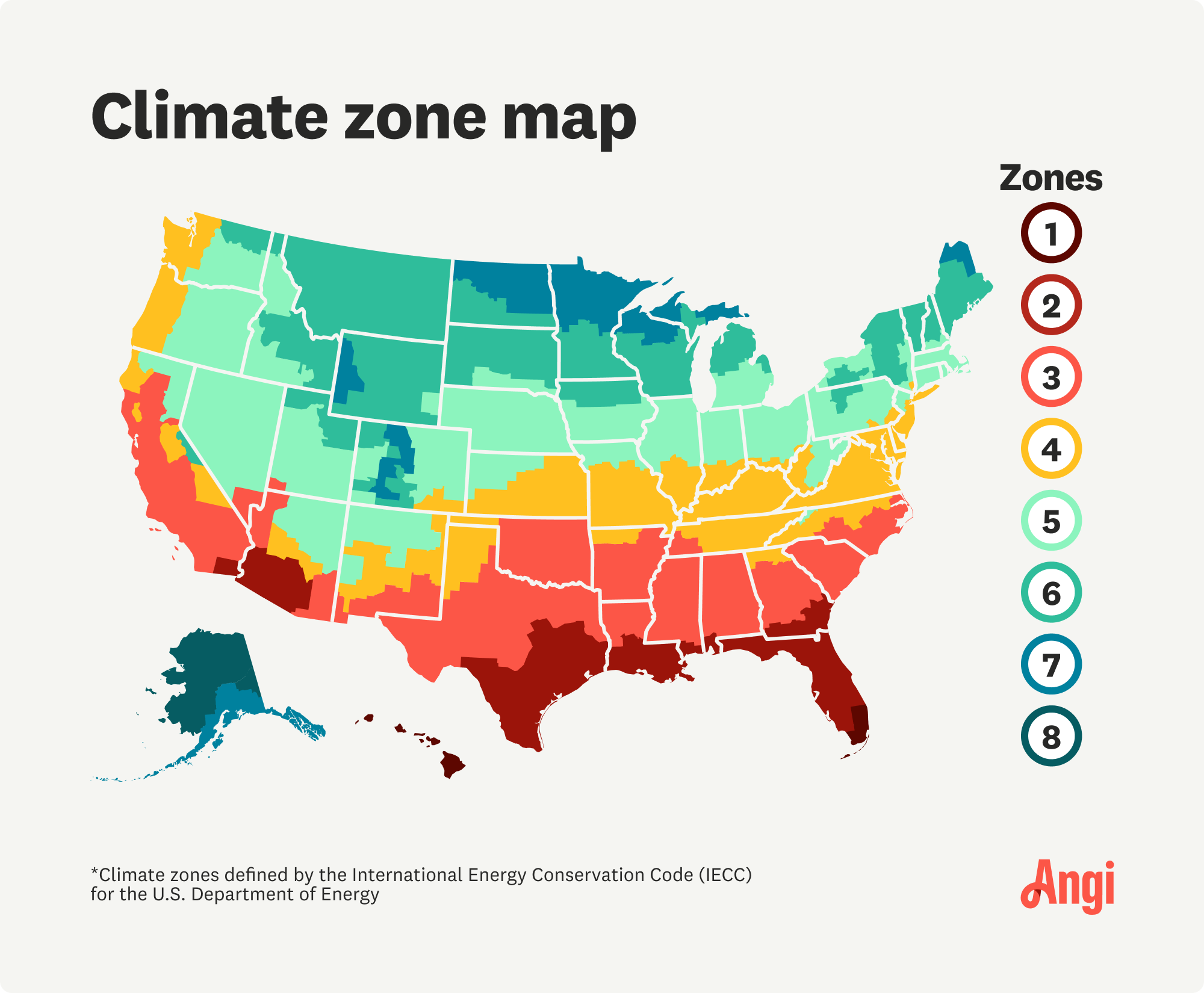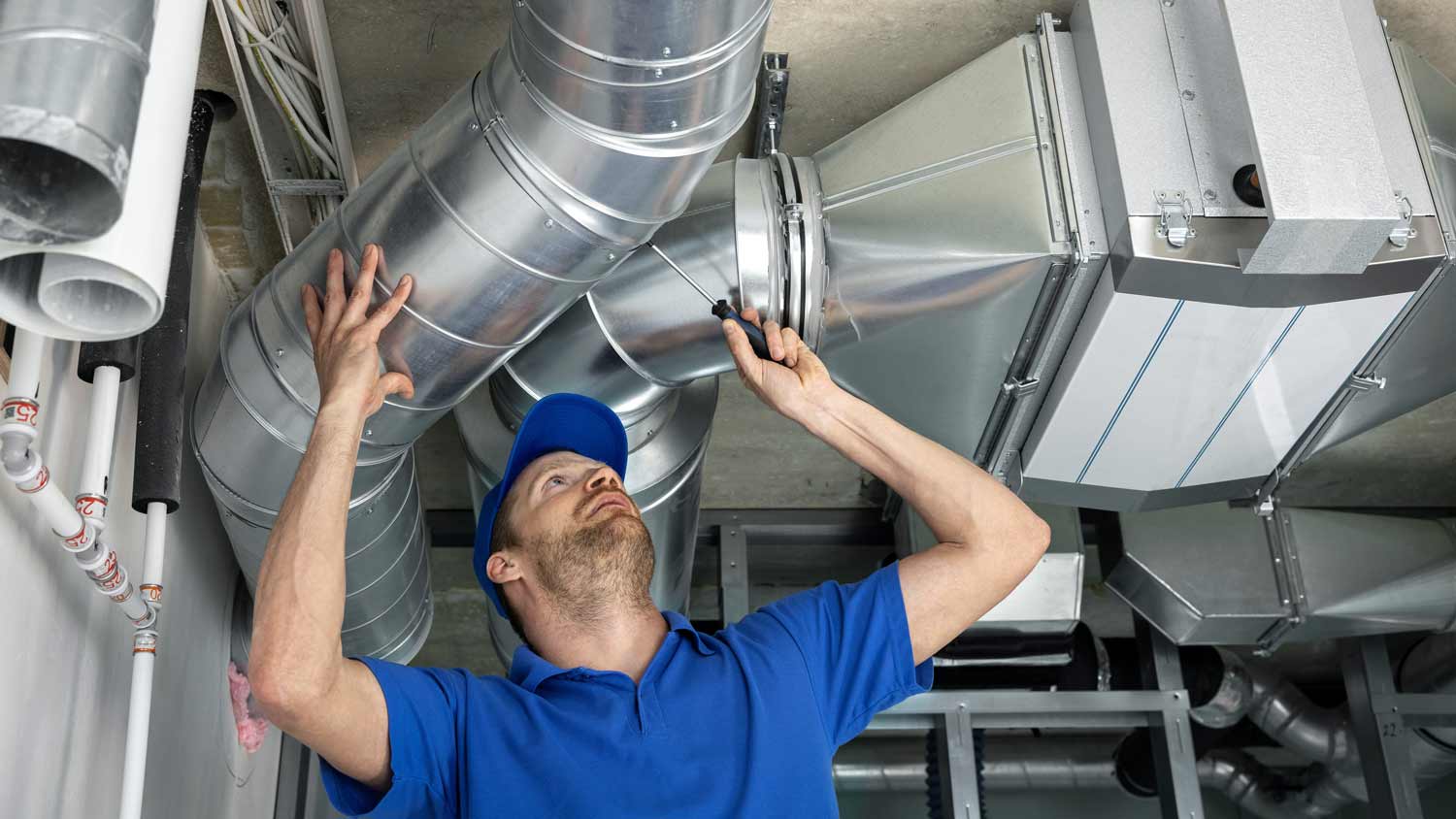
Find out the average baseboard heater installation cost, key price factors, and ways to save. Get transparent, expert-backed estimates to plan your project.
Boiler installation or replacement costs about $5,909 on average, although prices range from about $3,604 and $8,446 depending on boiler type, fuel type, house size, and other factors.


The cost of boiler installation increases by around $500 for every additional 500 square feet of home size.
While electric boilers are extremely affordable, they should only be used for tiny homes.
Gas boilers are a mid-range option with straightforward maintenance and good efficiency.
If you’re replacing a boiler that's over 50 years old, prepare for added costs based on the added complications, like the risk of asbestos.
Depending on your current setup, you may need to budget for things like new electrical work, ductwork, or gas lines.
Heating your home is vital, especially when returning from chilly days outside. Boiler installations cost about $5,909 on average, with some projects costing as little as $600 and others costing as much as $12,000.
An estimate of the cost of your boiler by your home’s square footage and boiler capacity goes as follows:
| Home Size | BTUs | Cost |
|---|---|---|
| 1,000 sq. ft. | 30,000 – 45,000 | $4,000 – $6,200 |
| 1,500 sq. ft. | 45,000 – 68,000 | $4,500 – $6,800 |
| 2,000 sq. ft. | 60,000 – 90,000 | $5,100 – $7,800 |
| 2,500 sq. ft. | 75,000 – 113,000 | $5,600 – $8,600 |
| 3,000 sq. ft. | 90,000 – 135,000 | $6,100 – $10,000 |
Costs include materials and labor.
Fuel type will have a major impact on both your ongoing costs and how much you pay for a new boiler.
| Fuel Type | Price |
|---|---|
| Oil | $4,800 – $9,000 |
| Gas | $4,000 – $9,000 |
| Propane | $2,800 – $7,500 |
| Electric | $1,800 – $8,000 |
| Wood | $7,000 – $16,000 |
Oil Boiler: Oil burns hotter than gas, so oil boilers are more efficient at heating homes. However, oil boilers require more maintenance than gas options, so keep things like long-term maintenance costs in mind before buying.
Gas and Propane Boiler: Propane and natural gas are common options for heating homes. In addition to the unit price, installation costs $1,000 to $3,000 and requires new exhaust lines, drains, and fuel lines.
Electric: Electric boilers are highly efficient and don't require some of the components that gas and oil boilers need, like exhaust vents. They take a long time to heat up but are an attractive option for tiny homes in warm climates.
Wood: Large, outdoor, wood-fueled boilers are options in rural areas that have easy access to wood.

Boilers are typically broken out by fuel type, but they can also vary in other ways—like their system types.
| Boiler Type | Cost |
|---|---|
| Conventional | $2,200 – $7,000 |
| Combination | $2,600 – $7,000 |
| System | $3,000 – $6,000 |
| High-efficiency | $6,000 – $11,000 |
Standard or Conventional Boilers: These boilers work by quickly heating water in pipes and sending it to taps. Standard units are one of the most popular choices for homeowners in large homes and floor heating systems.
Combination Boilers: Combination boilers are popular because they’ll give you access to hot water quickly. However, the supply tends to be limited due to the lack of a storage tank.
System Boilers: These work by keeping high-pressure hot water in a sealed cylinder, where it can be sent to multiple taps within the home simultaneously.
High-Efficiency Boilers: High-efficiency boilers are up to 98% efficient, which accounts for thousands of dollars in savings over the boiler's life. Standard boilers are around 80% efficient, ideal for cold climates.
Detailed boiler customization chooses BTUs based on your region and its climate. Warmer climates make it much easier to heat water, even for larger houses, so fewer BTUs are required. You can estimate your necessary BTUs by finding out which climate zone you live in.

Hiring a heating contractor will cost $100 to $250 for the initial assessment. Once the pro stars work, you can expect an hourly rate charge of $100 to $250 per hour on top of the cost of any necessary parts and the boiler itself.
In addition to the main costs of installing a boiler, you’ll also want to consider the following extras that could impact your total expenses.
Before you can install a boiler, you’ll need to acquire a permit. Most permits range anywhere from $50 to $300. The biggest cost factors include your location and whether your installation is for an existing home or a new build.
New builds tend to cost towards the higher end of the price range. You might also need to have an inspection, which runs anywhere from $40 to $75.
What happens to your old boiler? These units are too large and complicated for the average homeowner to move on their own. That’s why replacing a boiler also requires boiler removal costs.
Boiler removal pricing varies based on the type of boiler. For example, disconnecting gas lines is more complex than taking out an electrical heating unit. Old boilers from 50 years ago or longer are especially expensive to safely remove because of the risk of asbestos and other issues.
The price to install ducts is between $3,000 and $7,500 for 300 linear feet. Larger homes may cost up to $15,000 to install more ducts per linear foot, while smaller homes might fall under the average price range. Ductwork can add a significant price tag to your installation if you don’t already have one installed. However, when it comes to boilers vs. furnaces, boilers typically don’t have ducts, so you’re unlikely to have to pay extra for new ducts. Instead, most boilers tend to use water pipes.
If your home needs new insulation, the cost to install insulation is around $5,200. To save on insulation prices, you might not need to replace all of the insulation in your home. Instead, you might want to insulate your attic, crawl space, or basement to keep the heat inside your home and decrease how hard your boiler system will have to work to warm your house.
Installing new gas lines costs between $120 and $1,350 or $550 on average.
If you already have gas lines installed, you can circumvent these additional expenses. Anticipate spending between $15 and $25 per linear foot for labor and materials. The type of material you choose can hike up the price or save you money:
| Material | Cost per Linear Foot |
|---|---|
| Polyvinyl chloride (PVC) | $0.50 – $1.50 |
| High-density polyethylene (HDPE) | $0.50 – $1.50 |
| Copper | $1 – $3 |
| Corrugated stainless steel tubing (CSST) | $2 – $4 |
| Galvanized steel | $3 – $8 |
| Black iron | $3 – $8 |
Nobody likes having an electrical system that can’t handle the electrical load in their house. The cost to upgrade your home’s electrical system depends on what you plan on upgrading. Here’s a breakdown of the average costs of various electrical upgrades.
The cost to rewire a house: $1,500
Amp service upgrade cost: $1,350
If your contractor discovers the dreaded asbestos inside your home while removing an old boiler, the cost to remove asbestos is $2,100 on average, or between $1,150 and $3,000. If your entire house contains asbestos, you could spend anywhere from $15,000 and $30,000 to remove it. According to the Environmental Protection Agency (EPA), asbestos is a dangerous mineral that can cause cancer, so you’ll want to take action.
The cost to replace a thermostat is $175 on average. You might pay more depending on the type of thermostat you have for your boiler. For example, smart thermostats can run up to $300 on average.
Once your boiler is installed, you’ll need to factor in maintenance costs. There are several maintenance services that keep your unit running smoothly, including the following:
| Service | Average Cost |
|---|---|
| Tune-up costs | $400 – $500 |
| Gas and oil boiler cleaning | $150 – $500 |
| Flushing boiler | $200 – $600 |
| Boiler inspection | $100 – $300 |
| Boiler maintenance | $75 – $125 |
The price of your new boiler depends on the size of your home, so you’ll need to know your square footage to calculate the size of the boiler you need.
Boiler sizes are measured by how much heat they give off, represented in BTUs (British Thermal Units). Find your BTU rating by multiplying your home’s square footage by the climate number representing your region in the table below.
| Cold Factor | Climate or Region |
|---|---|
| 25 to 40 | Hot and warm, e.g., the Southeast |
| 40 to 50 | Moderate, e.g., the mid-Atlantic |
| 50 to 60 | Colder climates, e.g., Pacific Northwest |
| 60 to 70 | Frigid climates, e.g., Northeast |
For example, if you live in a 2,000 square foot home in the mid-Atlantic, you’ll multiply 2,000 by the higher end of the cold range (in this case, 50) to figure out that you need a boiler with a capacity of 100,000 BTUs.
Installing a residential boiler is a job best left to the pros. If you install one incorrectly, you could risk causing damage to your boiler or the floors of your home. Instead, find a local boiler installation company to safely install your boiler.
You’ll spend between $1,500 to $2,500 for DIY boiler installation. But again, improper boiler installation could cause serious damage to your home. Not to mention, it’s illegal to install a boiler without a license in some states. A local HVAC technician would charge somewhere between $75 to $200 an hour to do the job, so you’d save a few hundred dollars in labor fees going the DIY route.
See if you can repair your existing boiler before you decide to install a new one. You’ll spend between $200 and $600 on the cost of repairing your boiler, though in some cases, you can spend as much as $1,700. Compared to the $5,900 national average for replacing one, keeping the one you have could be more cost-effective.
If your boiler is over 15 years old, you should replace it. If you’re not sure if your newer boiler should be replaced, multiply your unit’s age by the cost of the repair. If the number is more than $5,000, replacing your boiler is more cost-effective.
The initial costs of a new boiler can be high. These tactics will help you save when picking a new model.
Compare several boiler installers: They may offer different quotes depending on availability, supply, and other considerations.
Switch to a more efficient boiler: Boilers are measured by the AFUE (Annual Fuel Utilization Efficiency) rating, which is a percentage-based comparison. The bigger the number, the more efficient the boiler. Increasing your AFUE by 15% or more leads to significant savings over time.
Stick to the same model: If saving on initial costs is a more important goal, look for the same brand and type of boiler. Switching to a different fuel source or a significantly different system requires new attachments, fuel lines, and more.
Look for discounts and incentives: Some installers offer discounts for a first-time installation with their company, or a discount if you sign up for a maintenance plan. Also, summer is considered an off-season for boiler installation and may yield more discount options.
Incentives and rebates: Federal and state governments can both offer rebates, as can local utility companies. Look up your address on the Energy Star website to see available incentives, and ask your installer what rebates are available in your area. A qualifying Energy Star-rated boiler can recoup 30% of the first $600 as a tax credit.
Make an insulation plan: If your home lacks proper insulation, you may be able to upgrade your insulation and choose a smaller, less expensive boiler than before. It’s an additional investment, but well worth it for long-term savings.
Installing a new boiler can increase your home's value by about 4% since it'll likely be an attractive selling point for interested buyers. New homeowners will rest easy knowing they won't have to replace their boiler for several years, and that they can rely on heat and hot water in the meantime.
Home is the most important place on earth, which is why Angi has helped more than 150 million homeowners transform their houses into homes they adore. To help homeowners with their next project, Angi provides readers with the most accurate cost data and upholds strict editorial standards. We’ve surveyed thousands of real Angi customers about their project costs to develop the pricing data you see, so you can make the best decisions for you and your home. We pair this data with research from reputable sources, including the U.S. Bureau of Labor Statistics, academic journals, market studies, and interviews with industry experts—all to ensure our prices reflect real-world projects.
Want to help us improve our cost data? Send us a recent project quote to [email protected]. Quotes and personal information will not be shared publicly.
From average costs to expert advice, get all the answers you need to get your job done.

Find out the average baseboard heater installation cost, key price factors, and ways to save. Get transparent, expert-backed estimates to plan your project.

Get transparent, up-to-date swamp cooler repair cost info to learn what impacts pricing and how to save on your next swamp cooler repair.

The cost of a new AC unit depends on the size and type. Our guide breaks down AC replacement cost factors so you can decide which option matches your budget.

This guide goes over the pros and cons of radiant floor heating, an energy-efficient alternative to traditional radiators and forced air heating systems.

Trying to choose between a MERV10 versus a MERV12 air filter? Compare filtration, airflow, and allergy protection to find the right fit for your home.

Leave duct size calculations and installations to pros, but you can still use this duct sizing chart to understand the project better.